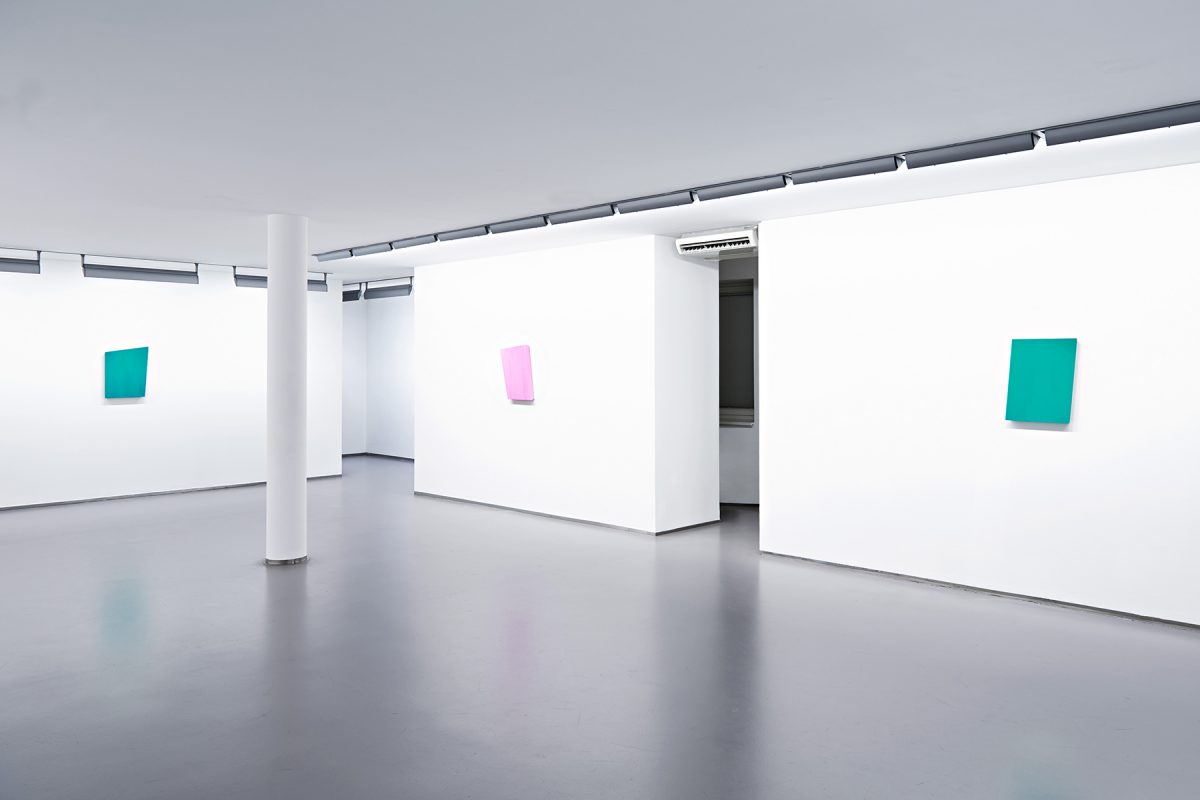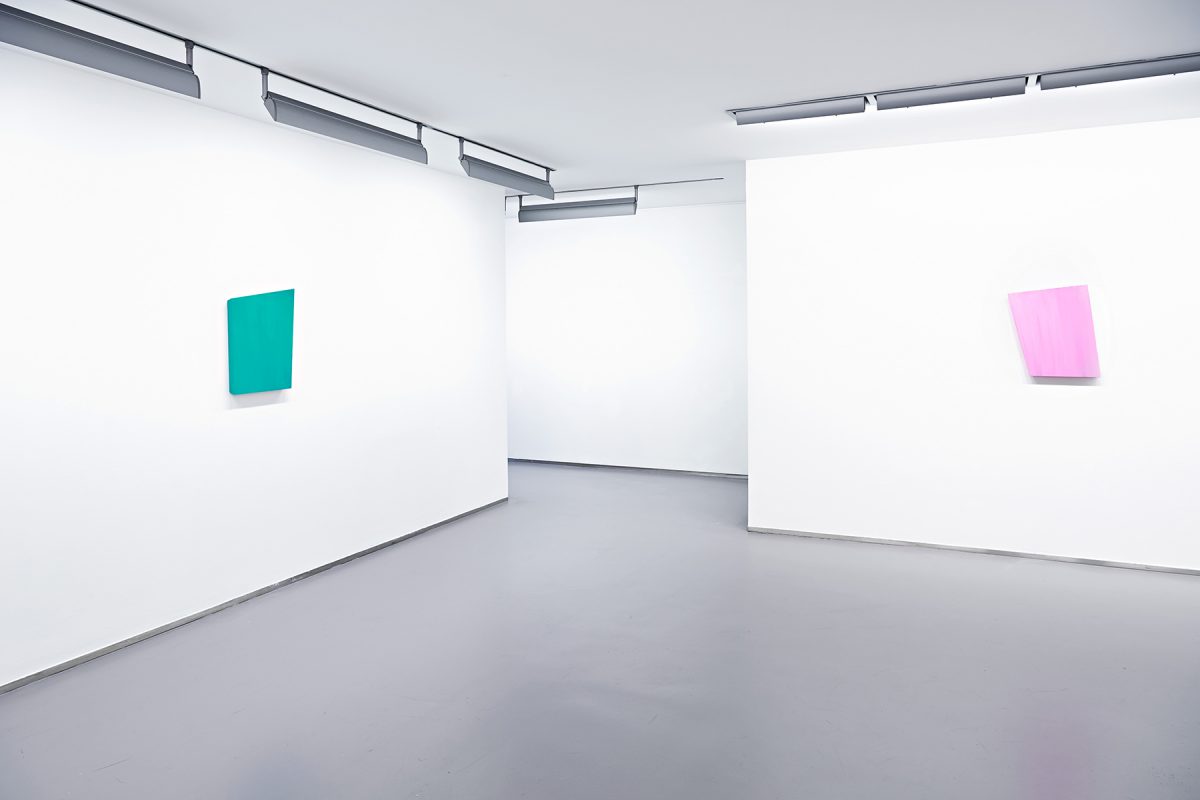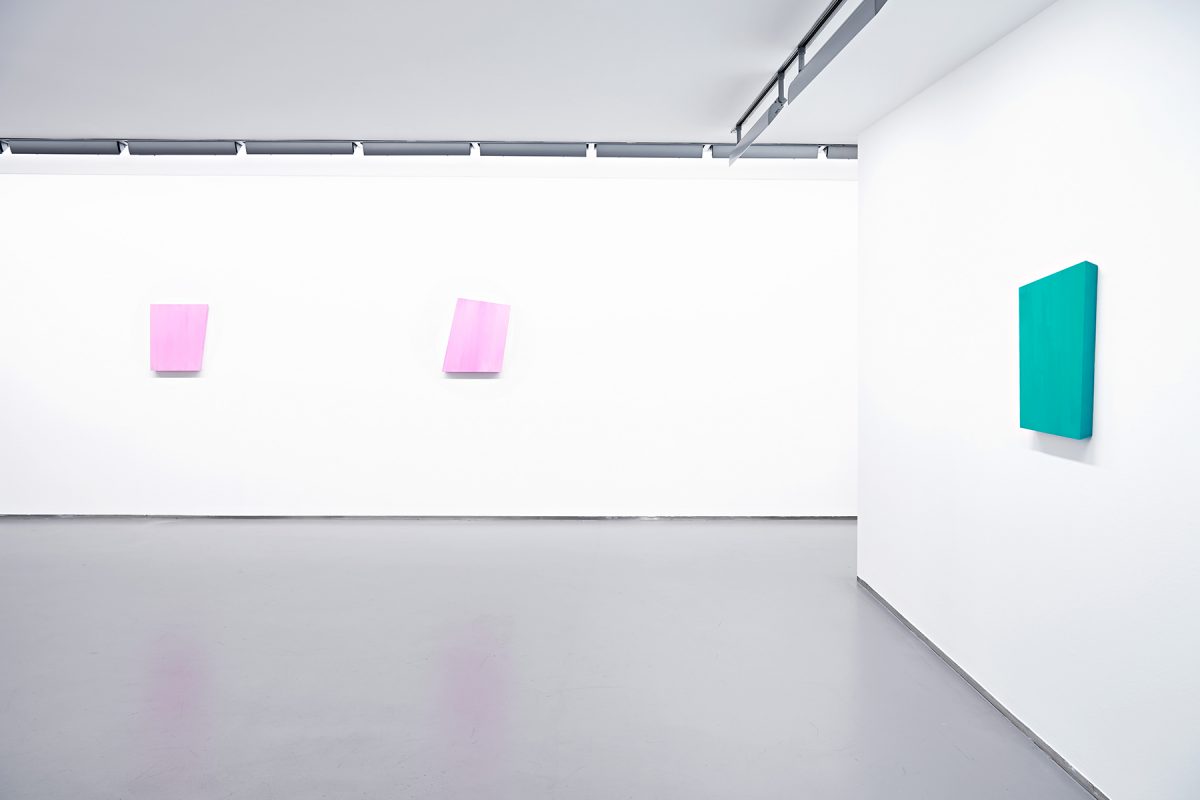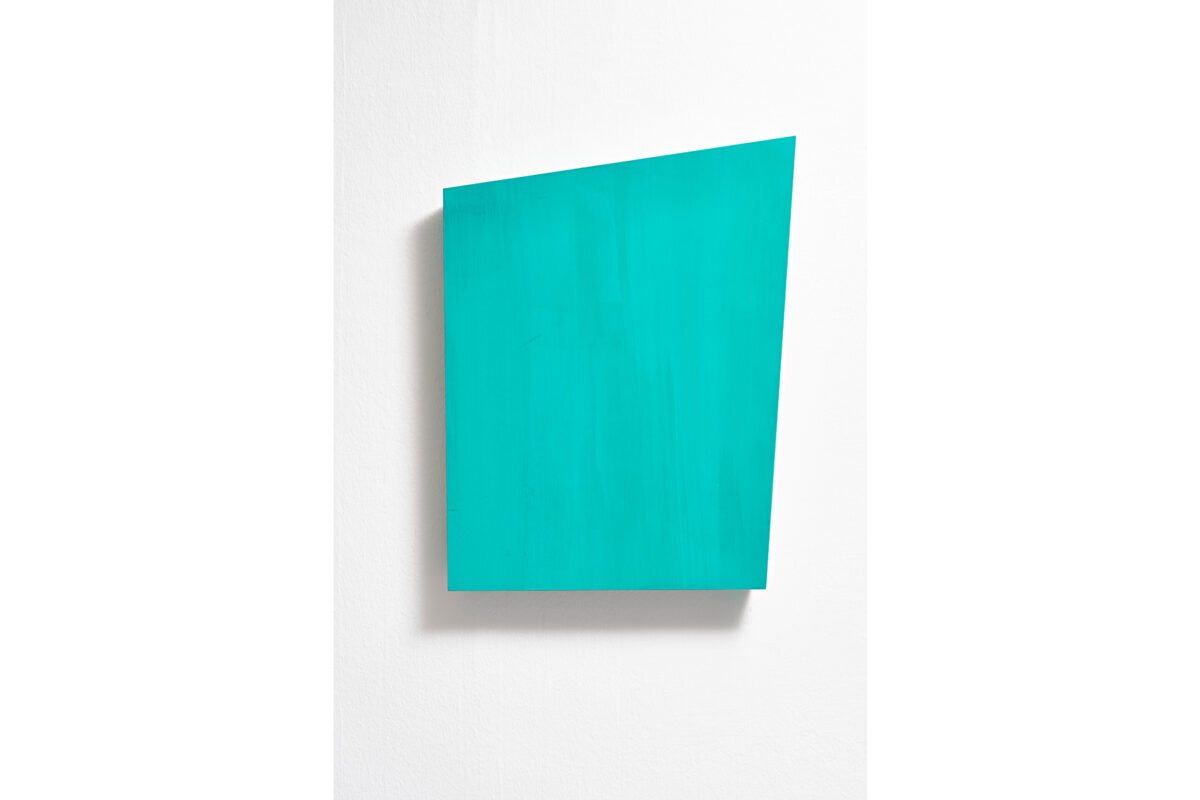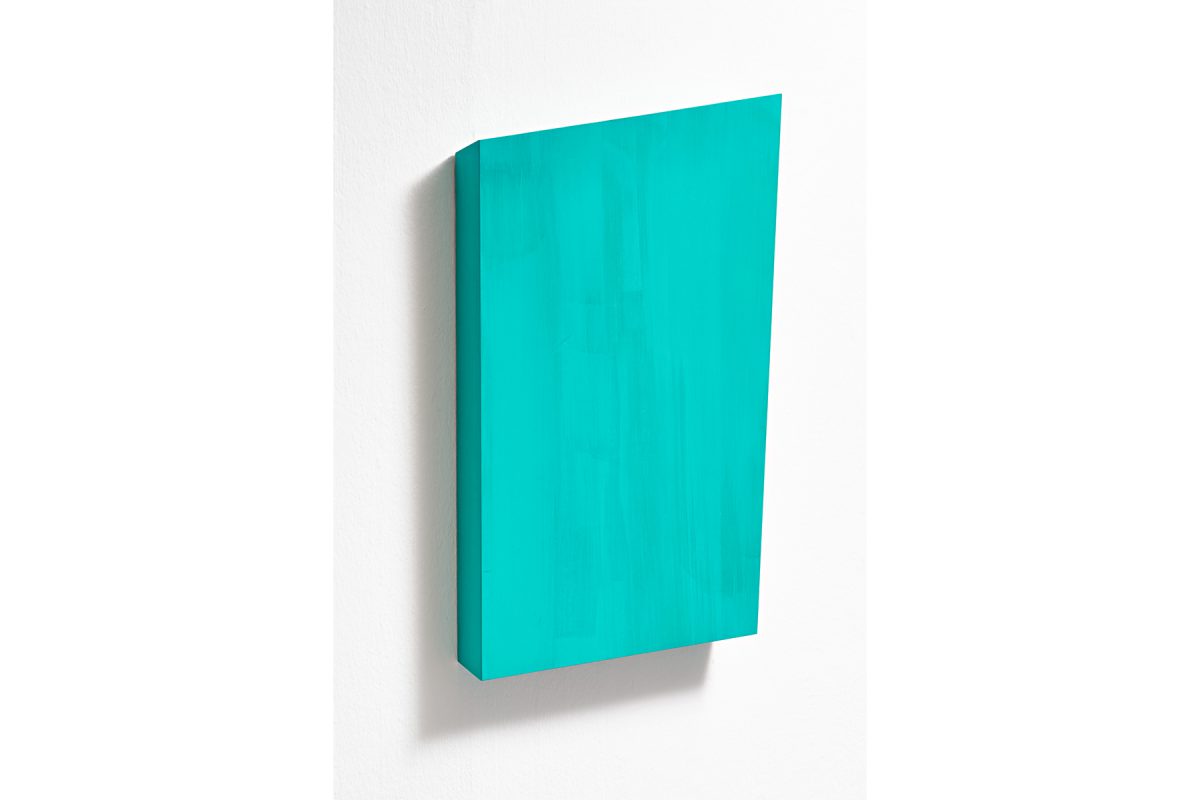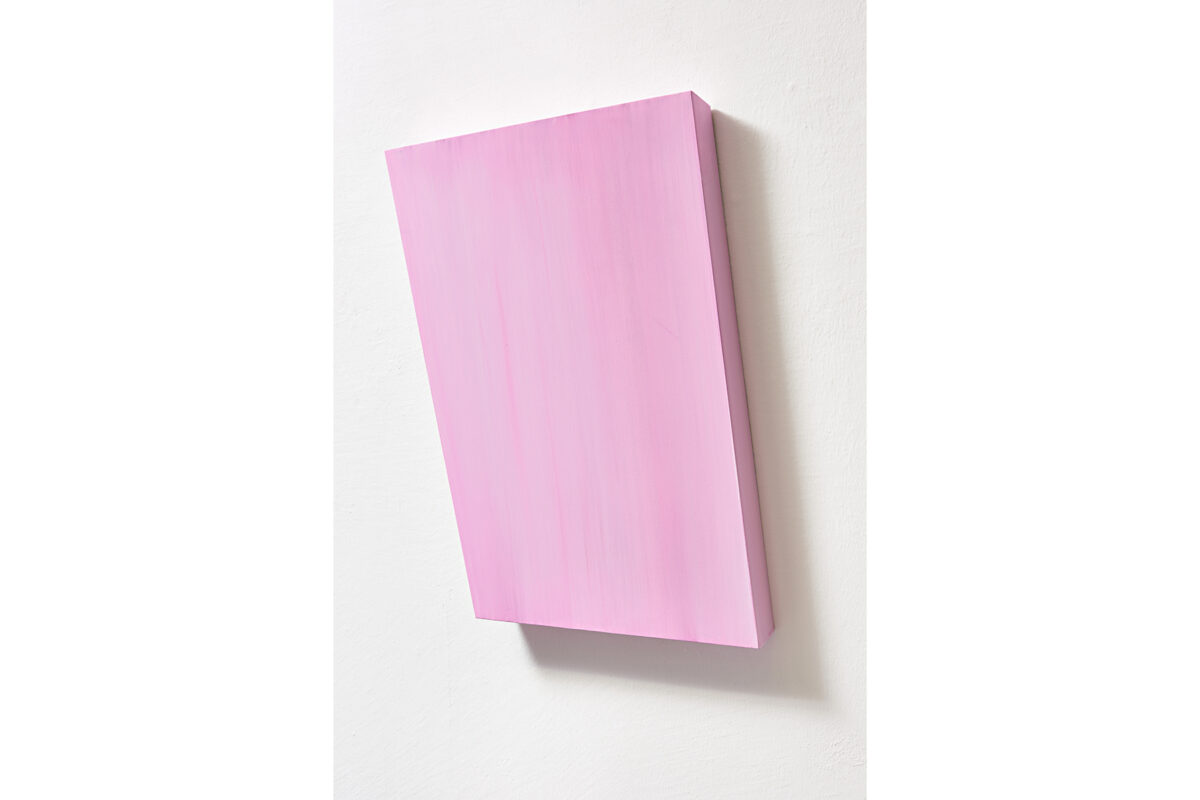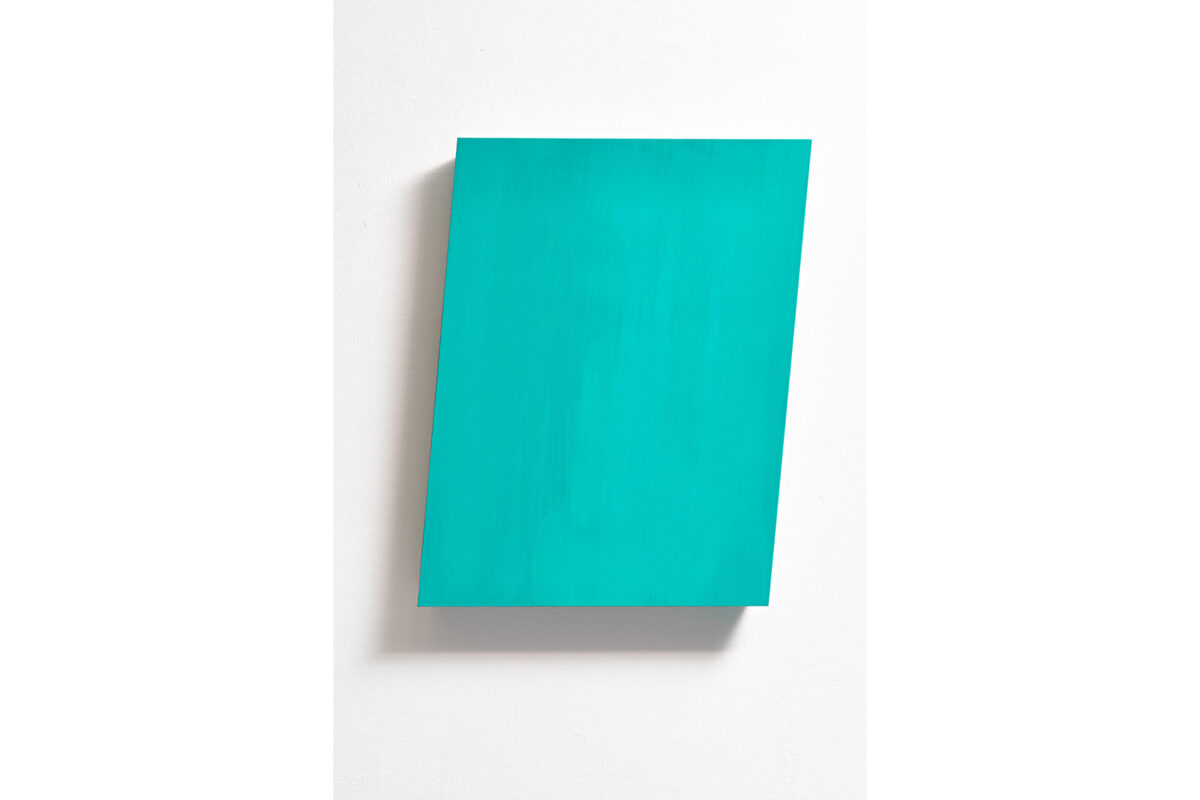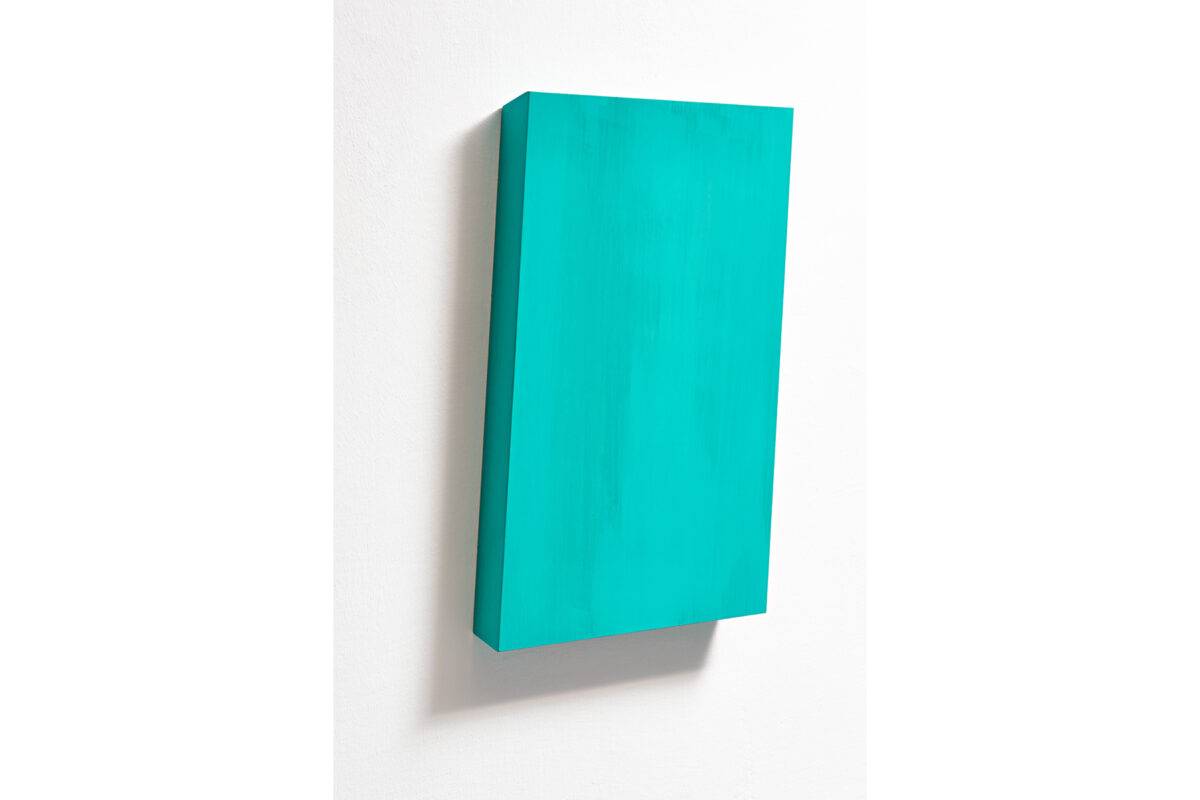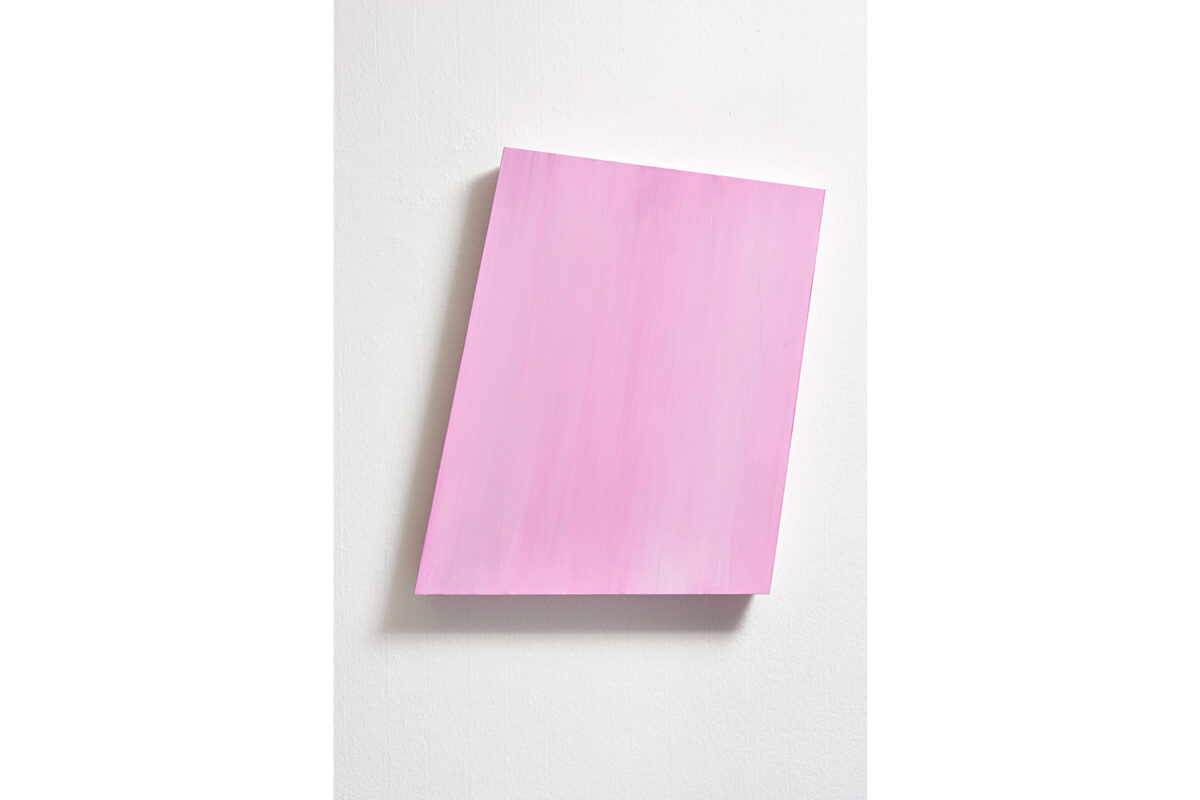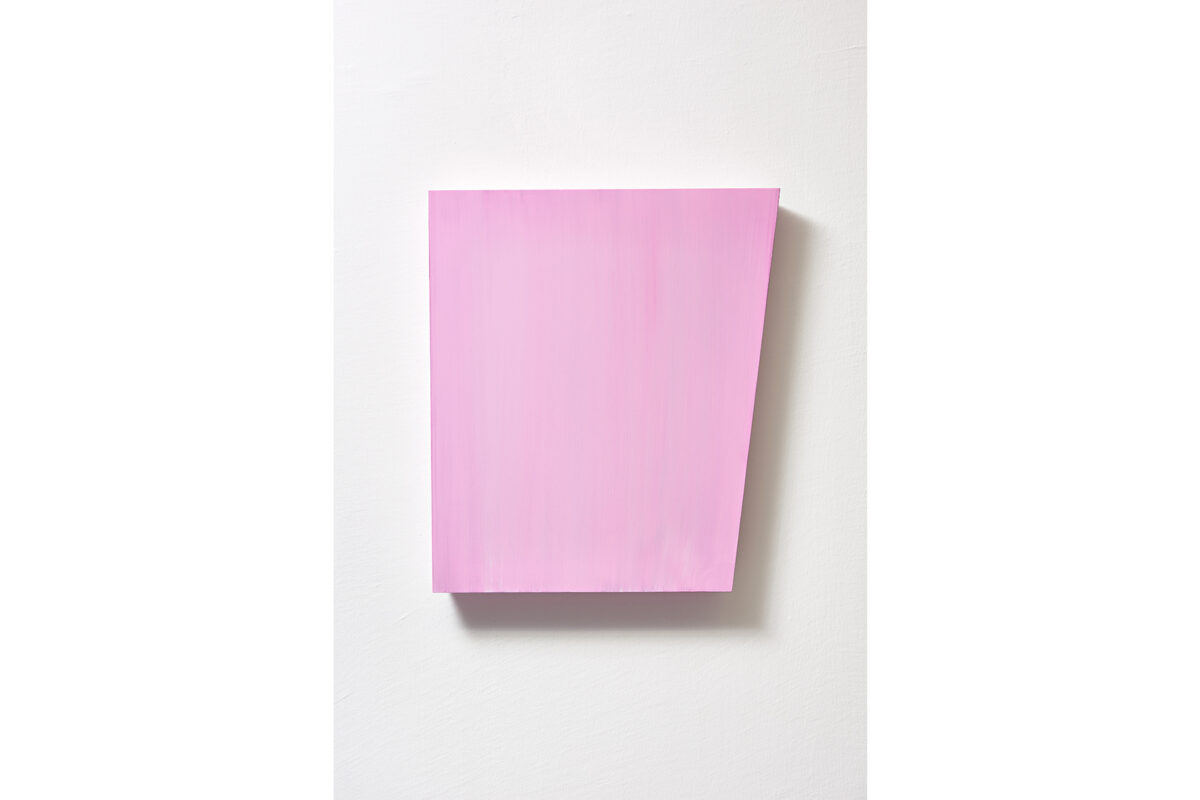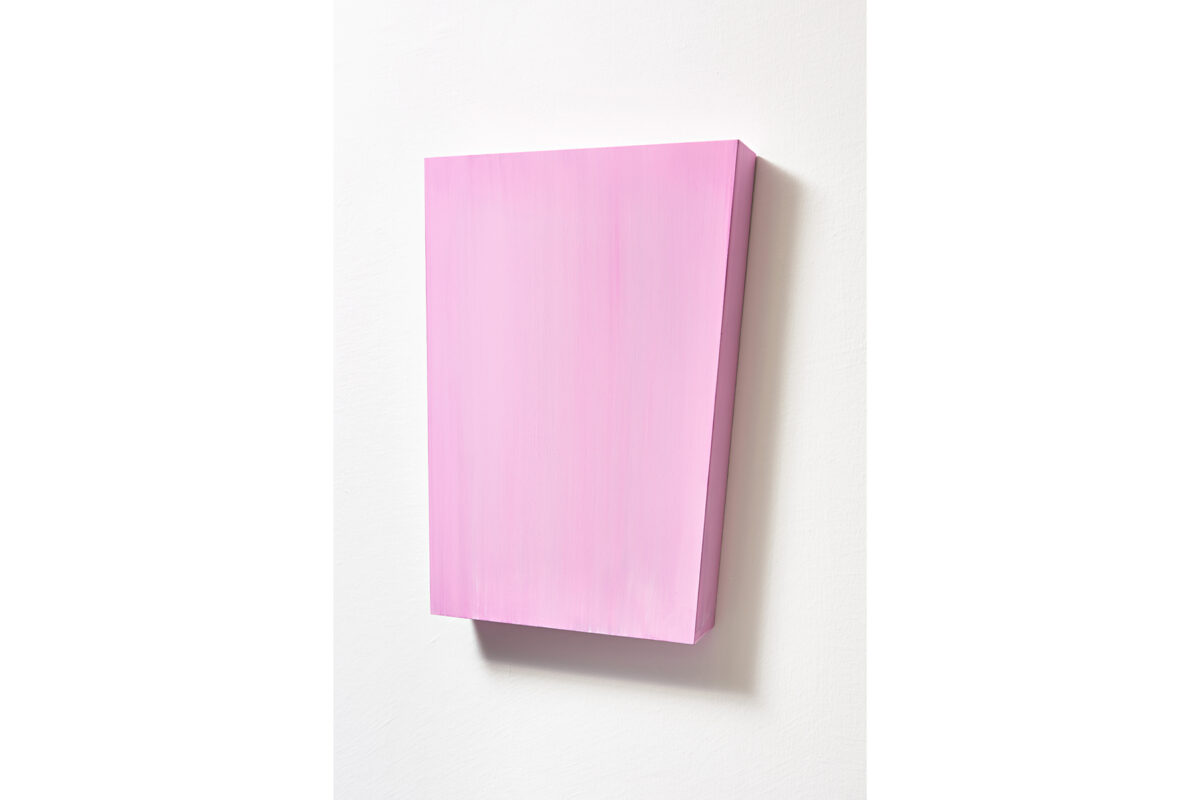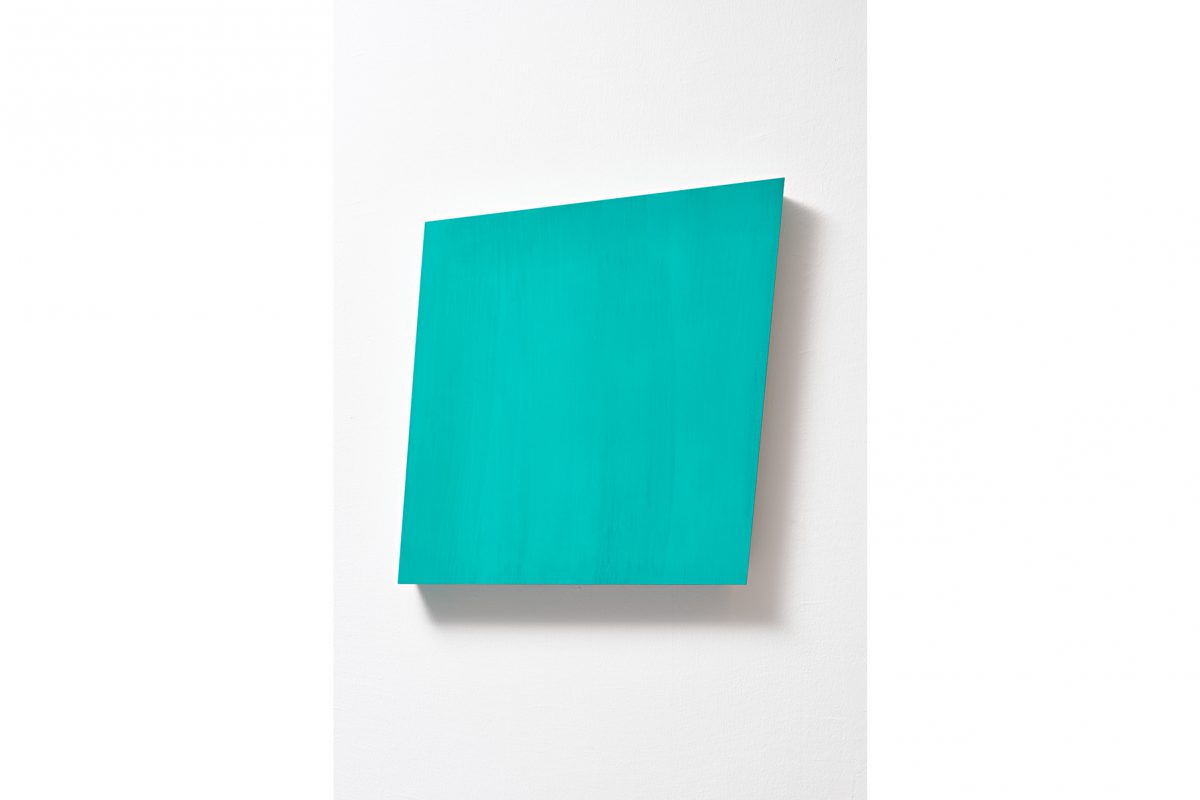The enormous room
October 12 – November 15, 2019
Galerie Bernd Kugler, Innsbruck, Austria
… When looking for activities that are comparable to the work of the visual artist, there are actually only two intellectual professions: It is the poet and philosopher who provide the community of objectives in which the artist participates. Their chief preoccupation, like the artist, is the expression in concrete form of their notions of reality.
Mark Rothko
In Madeleine Boschan’s oeuvre, literature and, above all, poetry are an important point of reference. Thus, the exhibition title The Enormous Room is borrowed from the novel of the same name by the American poet and writer E. E. Cummings. At the same time, this very novel serves as inspiration for the title of her new works for Innsbruck: In the further end six figures (a sort of room) I-VI.
But how can this work-inherent reference to literature be explained apart from the titles of the works? Like literature, which can conjure up spaces of thought in the reader, evoke a certain mood or describe a human interaction, Boschan’s sculptures constantly influence the atmosphere of a given place. This spatial atmosphere can affect moods and sensations, and thus triggers an interrelation between the works and the viewer’s perception.
In this regard, it is striking that it is always descriptions of places and spaces that interest the artist – places of human encounters and interaction which are the prerequisite for our reality and our human existence to occur. Thus, places are of an existential nature themselves. In recent years, Madeleine Boschan has created a series of portals that have an architectural feel to them and are characterized by a minimalist-constructive form language. Sometimes executed in small format, sometimes in monumental size, they are an imaginary as well as a real space for possible human encounters and interactions.
Madeleine Boschan has developed her new works In the further end six figures (a sort of room) I-VI, which are derived from the shapes of the openings and walk-through situations of these very portals. In this way, the works are part of a development in which her sculptures have moved more and more from an abstract linear form language to a flat, concrete one. She has created six geometric, monochrome wall pieces that strike a balance between the virtual image and the actual object, the pink and turquoise-green coloring of which is borrowed from the ancient polychromic tradition. The idiosyncratic flat objects clearly gain in physicality through their installation with an optical ’stand‘ on the lower edge, their specific forms tapering towards the wall, and the shadows created by this. Their plasticity is further enhanced by the hand-applied, haptic painting with egg tempera, in which every brushstroke, every painterly gesture and every layer of the paint application, consisting of several layers of paint, can be traced. Madeleine Boschan thus reflects on both the objecthood of the picture and the pictorialness of the object.
However, she adds another dimension in the further end six figures (a sort of room) I-VI since she turns the original empty forms or negative spaces of the portals into positive ones so that they meet the viewer with all their physicality. Wall and space combine with the perceived objects, which convey their potential pictorialness to the viewer. At the same time, temporality is inscribed in the works through the brush stroke and the multi-layered application of paint so that space and time meet in them.
The asymmetrical shapes of the works are in strong contrast to the symmetry of the gallery space. Through this, the human orientation as a subjective spatial sensation is unbalanced and the viewer is required to actively relate to the surrounding space and the works in order to determine his or her own position within this structure.
But how can this work-inherent reference to literature be explained apart from the titles of the works? Like literature, which can conjure up spaces of thought in the reader, evoke a certain mood or describe a human interaction, Boschan’s sculptures constantly influence the atmosphere of a given place. This spatial atmosphere can affect moods and sensations, and thus triggers an interrelation between the works and the viewer’s perception.
In this regard, it is striking that it is always descriptions of places and spaces that interest the artist – places of human encounters and interaction which are the prerequisite for our reality and our human existence to occur. Thus, places are of an existential nature themselves. In recent years, Madeleine Boschan has created a series of portals that have an architectural feel to them and are characterized by a minimalist-constructive form language. Sometimes executed in small format, sometimes in monumental size, they are an imaginary as well as a real space for possible human encounters and interactions.
Madeleine Boschan has developed her new works In the further end six figures (a sort of room) I-VI, which are derived from the shapes of the openings and walk-through situations of these very portals. In this way, the works are part of a development in which her sculptures have moved more and more from an abstract linear form language to a flat, concrete one. She has created six geometric, monochrome wall pieces that strike a balance between the virtual image and the actual object, the pink and turquoise-green coloring of which is borrowed from the ancient polychromic tradition. The idiosyncratic flat objects clearly gain in physicality through their installation with an optical ’stand‘ on the lower edge, their specific forms tapering towards the wall, and the shadows created by this. Their plasticity is further enhanced by the hand-applied, haptic painting with egg tempera, in which every brushstroke, every painterly gesture and every layer of the paint application, consisting of several layers of paint, can be traced. Madeleine Boschan thus reflects on both the objecthood of the picture and the pictorialness of the object.
However, she adds another dimension in the further end six figures (a sort of room) I-VI since she turns the original empty forms or negative spaces of the portals into positive ones so that they meet the viewer with all their physicality. Wall and space combine with the perceived objects, which convey their potential pictorialness to the viewer. At the same time, temporality is inscribed in the works through the brush stroke and the multi-layered application of paint so that space and time meet in them.
The asymmetrical shapes of the works are in strong contrast to the symmetry of the gallery space. Through this, the human orientation as a subjective spatial sensation is unbalanced and the viewer is required to actively relate to the surrounding space and the works in order to determine his or her own position within this structure.
Text by: Hannah Eckstein




